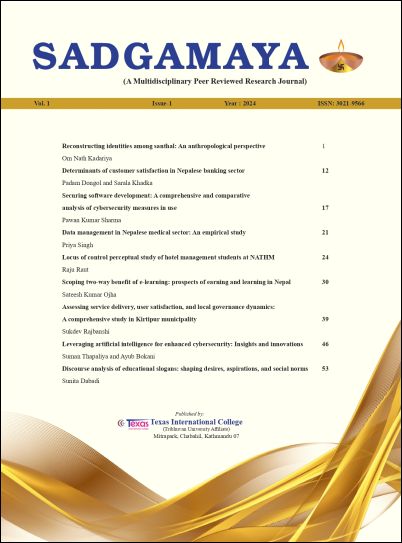Scoping two-way benefit of e-learning: Prospects of earning and learning in Nepal
DOI:
https://doi.org/10.3126/sadgamaya.v1i1.66884Keywords:
e-learning, distance learning, occupational education, professional educationAbstract
The subject discussed in this article is how people are being facilitated and better facilitated by an appropriate learning environment with the help of ICT. The issue is whether recent eLearning developments are beneficial in creating and adding value to a large group. The answer is with the help of the insight of the first learning mode, which began as distance mode along with some technologies. Present e-learning is the final requirement, and much more is needed. Making ICT accessible and practicable to people dispersing in different fields and areas can be exciting, so this study is forward. Can the unnecessarily used time, effort, and other physical resources in the name of receiving education and training be reduced and transferred to the relevant and meaningful directions of the learner’s life? This article analyzes the possibility of addressing them as those interested in learning from far-distant places. The study uses the literature on e-learning and secondary data. The finding pertains to the possibility of occupational learning to the masses of young adults aged 15 to 45 in agriculture and operating skills to be delivered. It implies designing a suitable learning environment by applying a humanistic approach. The limitation is focusing on occupational education to mass at their place and pace.
Downloads
Downloads
Published
How to Cite
Issue
Section
License
Reproduction of this journal or any part of it without the permission of the Publisher is strictly prohibited.




